How Does Xavi Simons Fit At Chelsea?
'Another One!'
After already acquiring Liam Delap, Joao Pedro and Jamie Gittens for their attacking unit this summer, Enzo Maresca is looking to add one more profile at the top end of the pitch, with RB Leipzig’s Xavi Simons looking imminent to join the Blues.
Last season, Maresca often operated with two touchline wingers, an inverted fullback alongside Caicedo and Enzo Fernandez with Cole Palmer in the pockets… So where exactly would Xavi Simons fit into all of this?
What could be bring?
Here is Simons’ heatmap from the 2024/25 season at Leipzig, where he featured as a left attacking midfielder in a 4-2-2-2. Whilst RB Leipzig didn't start with wingers on paper, Simons’ position would allow him to drift wide to receive the ball, having plenty of freedom between wider zones and that left half space.
The 22-year-old Dutchman is much more of a creator than a 1v1 touchline winger, thriving in his creative passing metrics over the years, averaging 2.10 key passes per 90 and 2.50 passes into the penalty area per 90 last season.
His skillset is much more akin to Cole Palmer and Enzo Fernandez than typical Maresca wingers such as Noni Madueke, Pedro Neto and new Chelsea signing, Gittens.
The key difference on what Simons can bring to this Chelsea side comes with his ability to carry the ball in central areas, operating in tight spaces between the lines.
His shifty agility mixed with that initial burst of acceleration often allows Simons to get his body between the defender and the ball, a quality that finds defenders on the Dutchman's back, in a situation where they would have to foul him to regain control.
Whilst the 5ft 10 “wingfielder” type can struggle in side to side contact, which comes more regularly in those wide 1v1 isolations, his clever body usage is perfect for central carrying, an asset Chelsea were lacking last campaign.
Chelsea’s recruitment this summer
Another clear factor dictating Chelsea’s recruitment this summer has been acquiring the right profiles to help them off the ball, having the athleticism, tenacity and workrate to counter press at a high level and adhere to Maresca’s aggressive man to man approach of the ball.
Many will look at Simons as a similar profile to Christopher Nkunku and Joao Felix, two players that Maresca had at his disposal last season, gathering just 1,273 minutes between them in the Premier League, showing the Italian clearly didn't trust the pair in the bigger games for one reason or another.
Nkunku averaged 2.83 ball recoveries per 90 last season, with Felix averaging slightly more at 3.85 per 90. However, Simons managed 5.25 ball recoveries per 90, often receiving praise for his workrate off the ball as an “off ball pest”.
How could they line up?
As we touched on earlier, Simons isn't your typical Maresca winger, he is much more suited to being in the pocket, much like Palmer. Therefore, to enable both of the creative geniuses to play alongside each other, the Chelsea coach would have to tweak his tactical approach.
During the Club World Cup, we saw Maresca trialling the usage of an overlapping fullback more often, allowing one of his wingers to come inside. In the final against PSG, Palmer started on the right, drifting inside to operate in his usual right half space position on the ball, with Malo Gusto overlapping to provide the width.
This blueprint is one way Simons could fit into the side, with Palmer playing in that right wing role but drifting infield, Simons playing as the number ten (operating in the left half space) and Gittens playing on the left.
Maresca would still have his willing runners holding width with Gittens on the left and Reece James (if his hamstring can handle it) or Gusto on the right. This would give Chelsea enough balance of off ball runners and creators who want touches on the ball.
Another way of getting Simons and Palmer in the same team would be flipping the same dynamic applied above, but from the right side to the left.
Simons would start on the left, drifting infield to operate in the left space. Palmer would be the number ten, still operating in the right half space and Pedro Neto would be on the right wing holding the width.
The key difference in this example would be the left full-back overlapping instead of the right full-back, with Marc Cucurella providing width on the left.
All of this, without even mentioning Estevao Willian, who I’m guessing half the people reading this are shouting about right now. His involvement will be key in no time at all, but the youngster could do without being thrown in at the deep end, and adding Xavi Simons is another attacking option who can alleviate that pressure from the young Brazilian wonderkid.



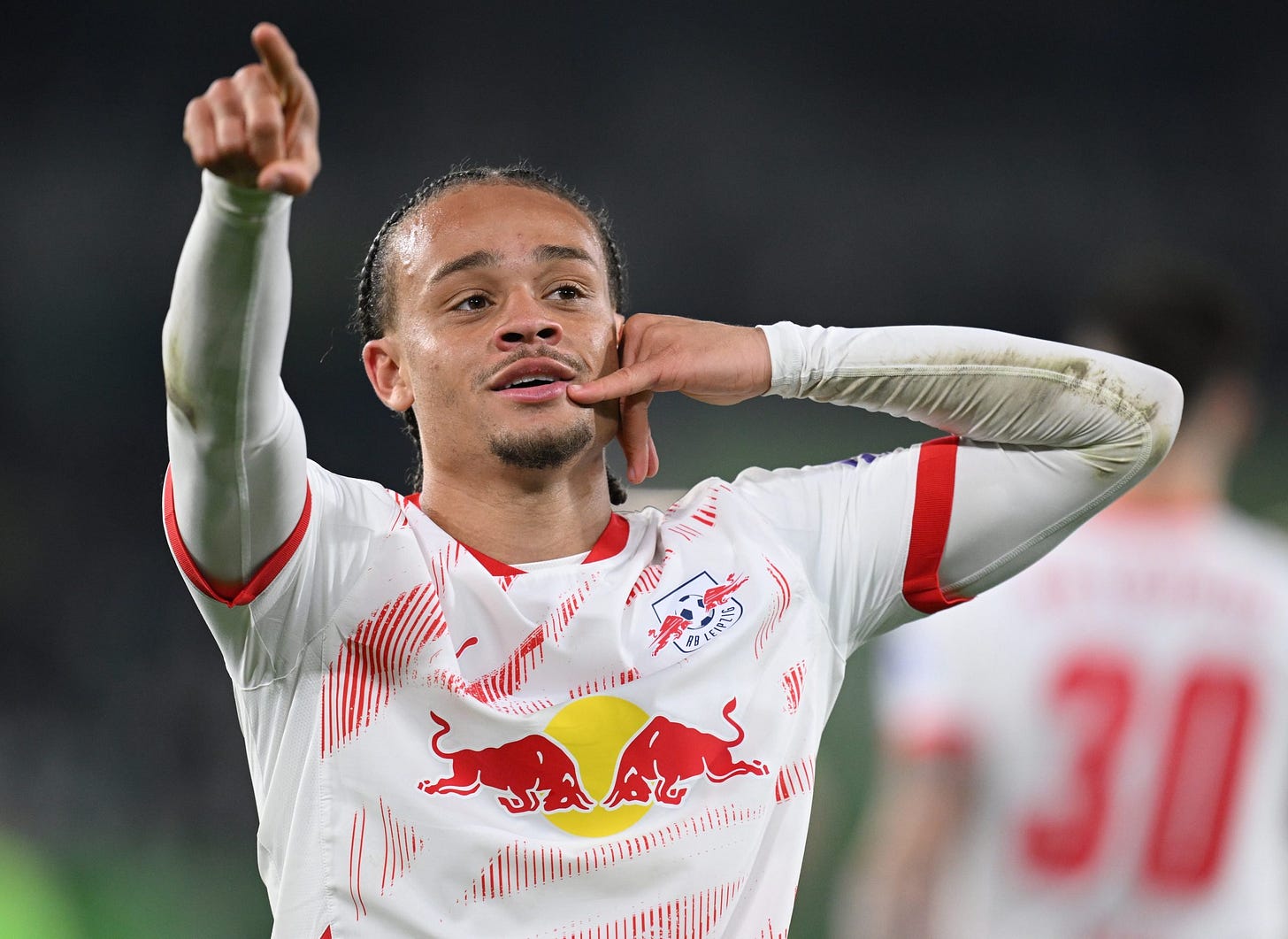
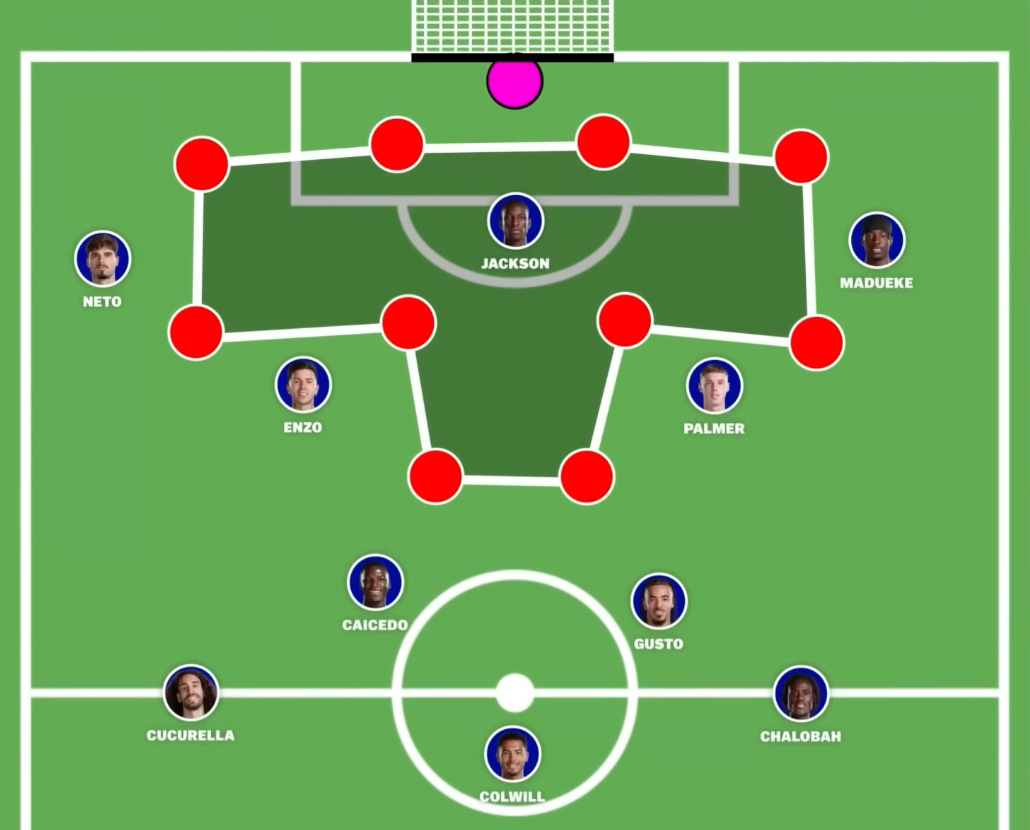

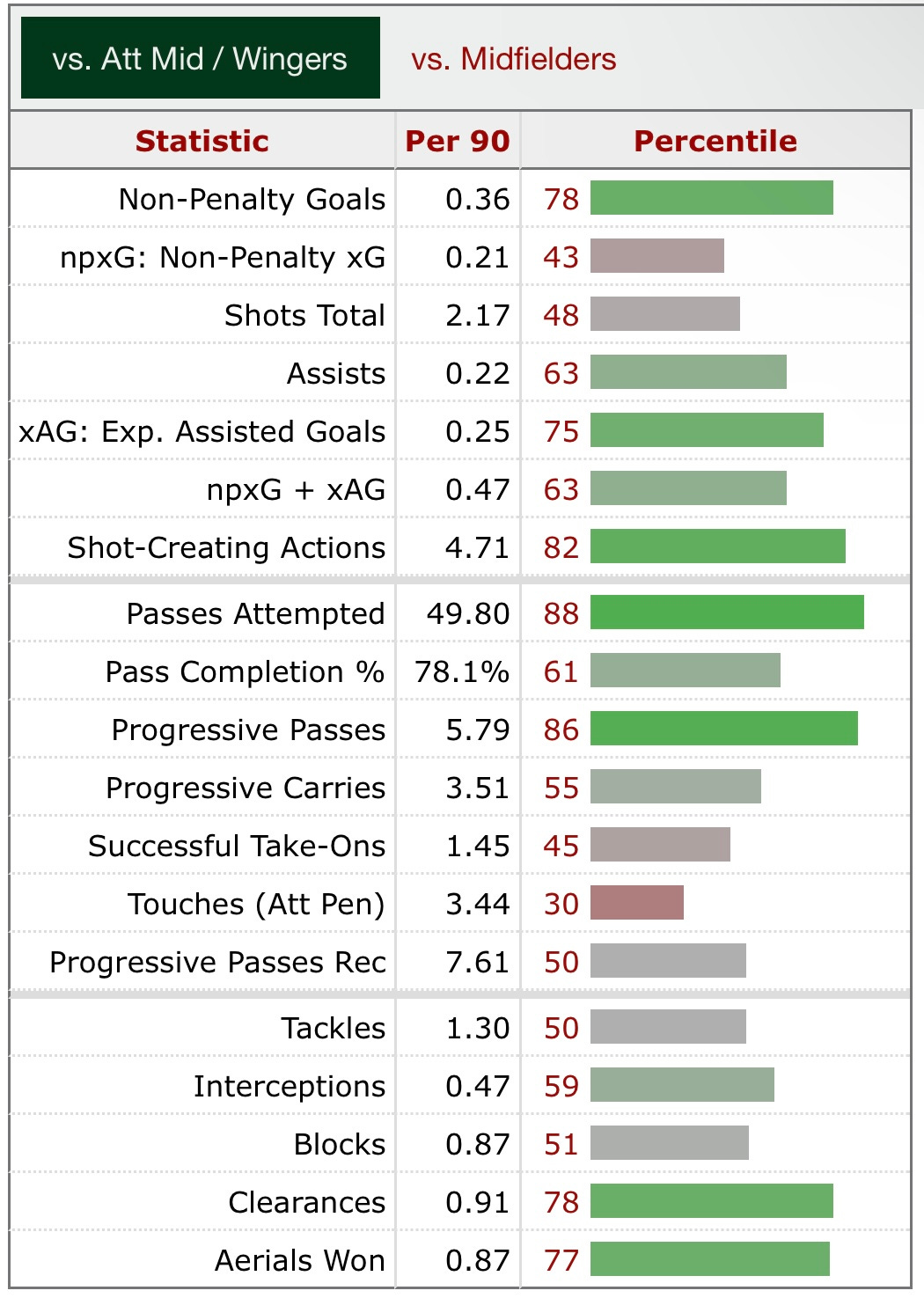
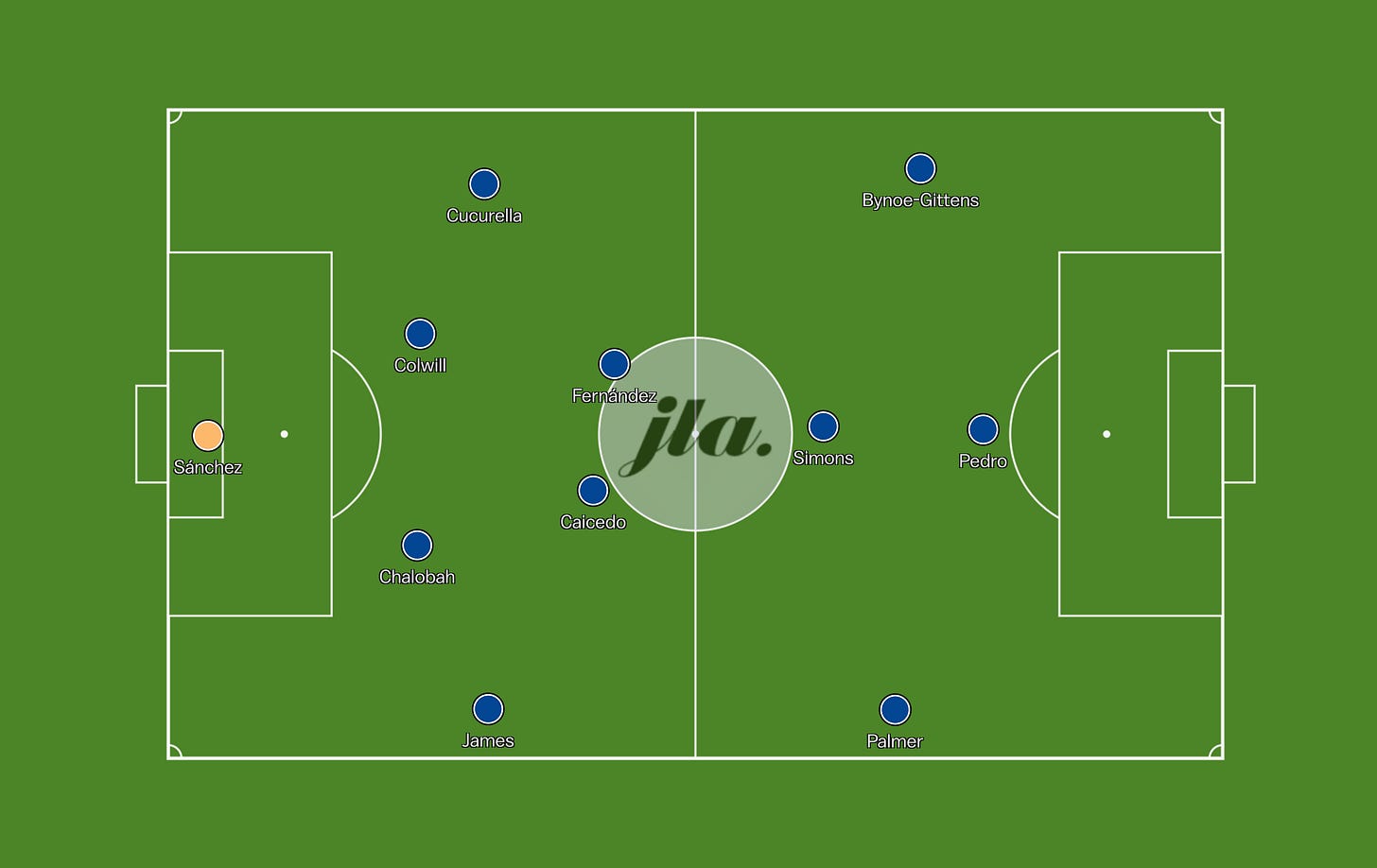
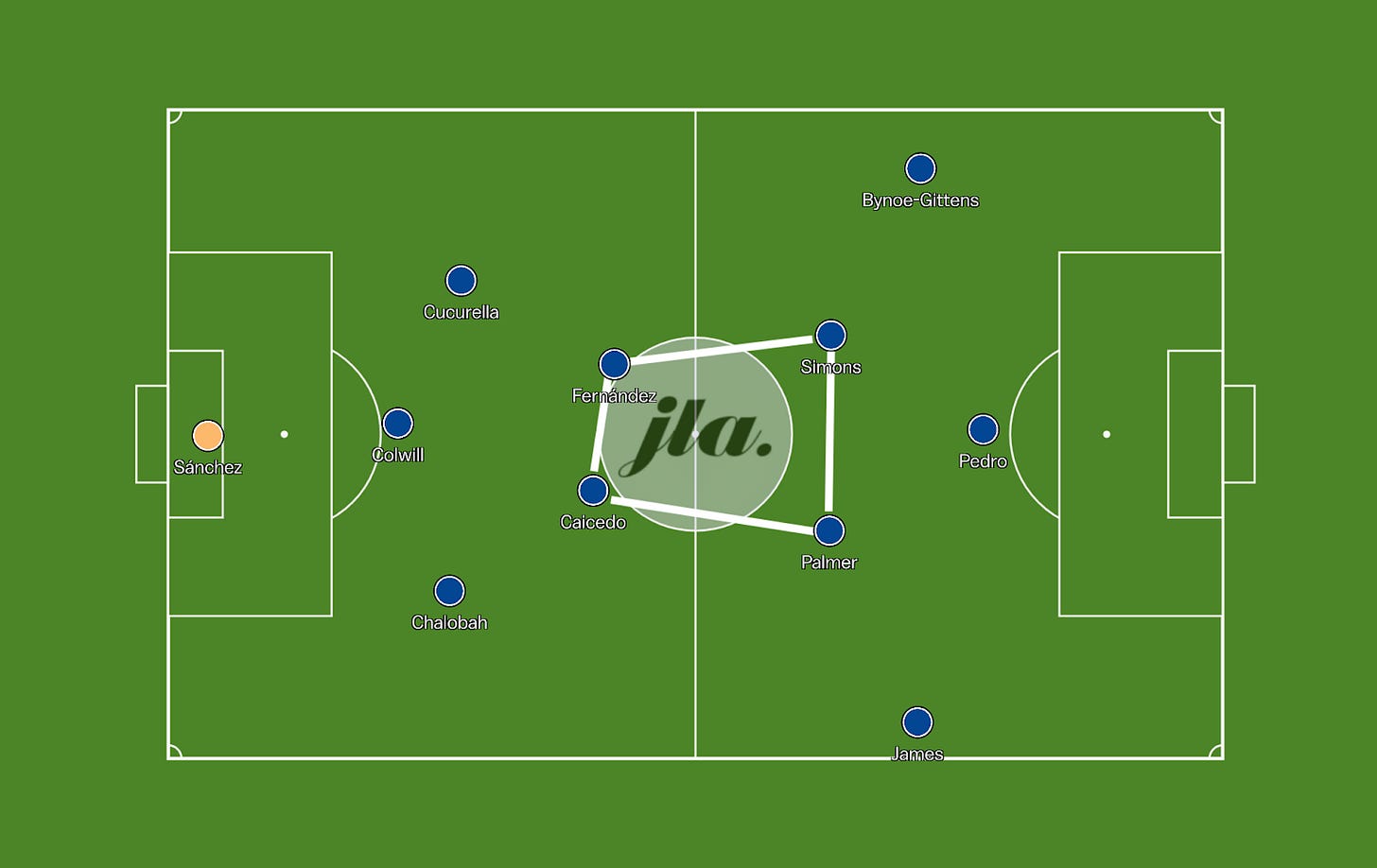
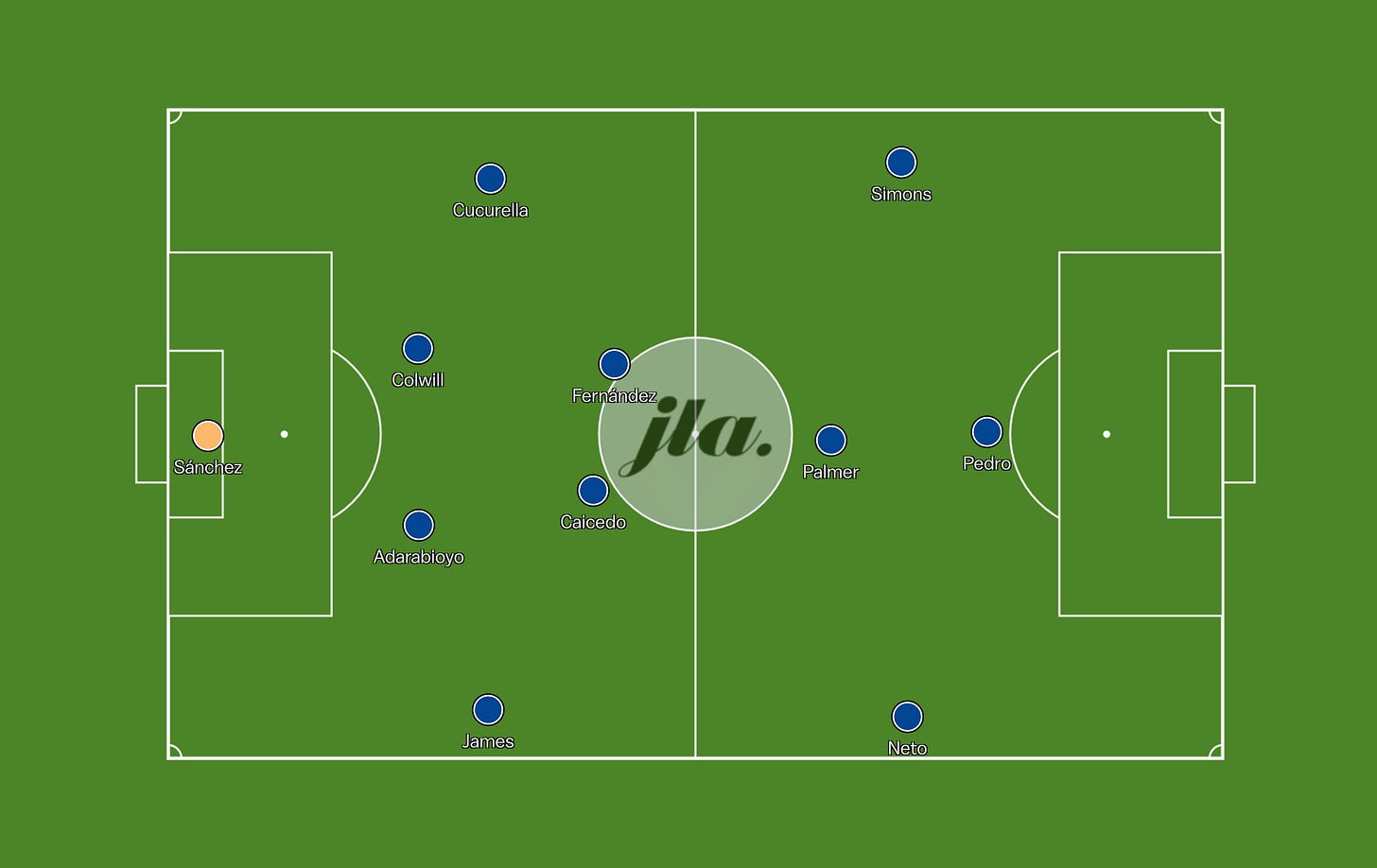
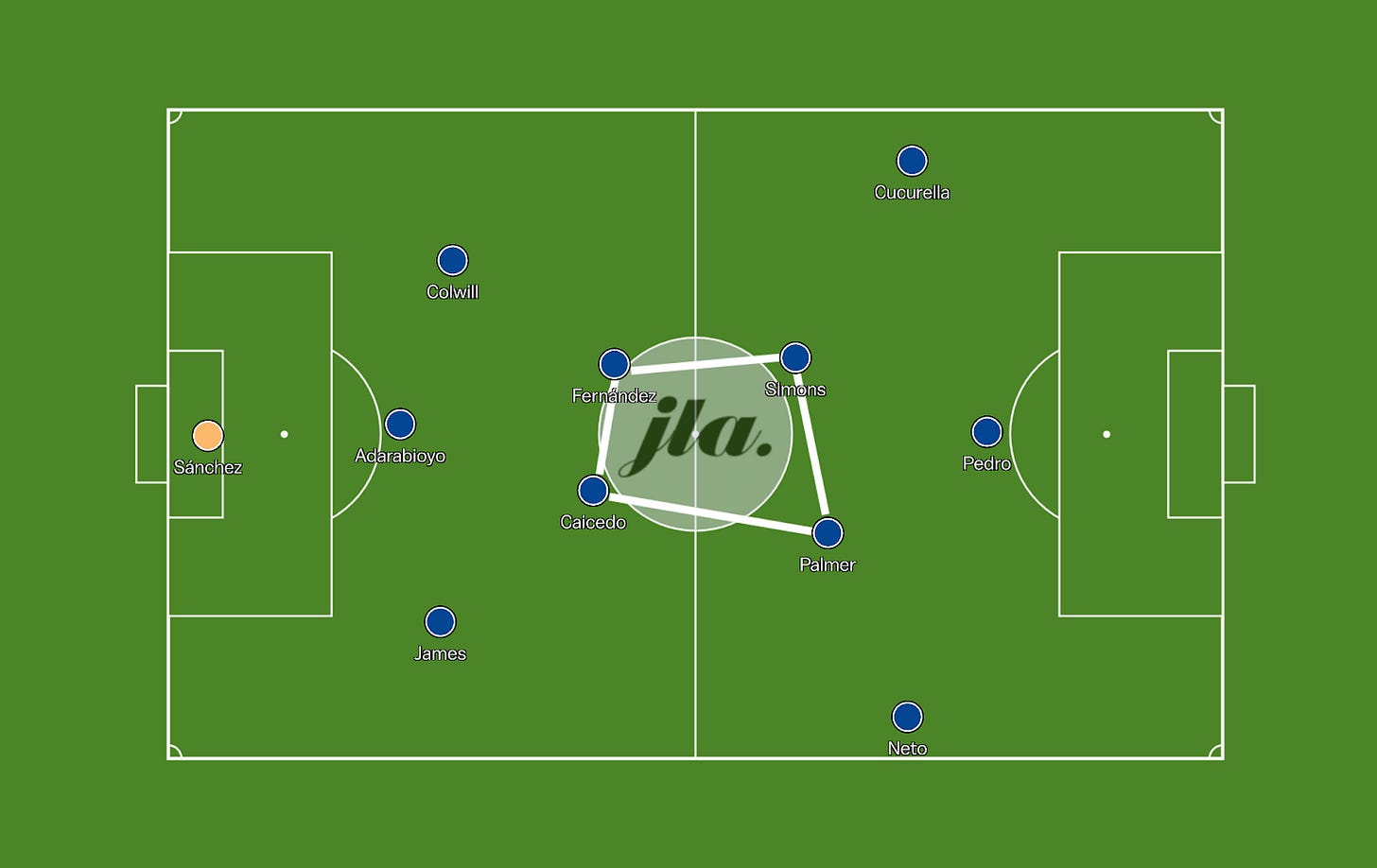

Nice analysis, it reminds me of Mikel-Lamps-Mata triangle in 2012. However Palmer makes any comparison hard as he can play pretty much anywhere.